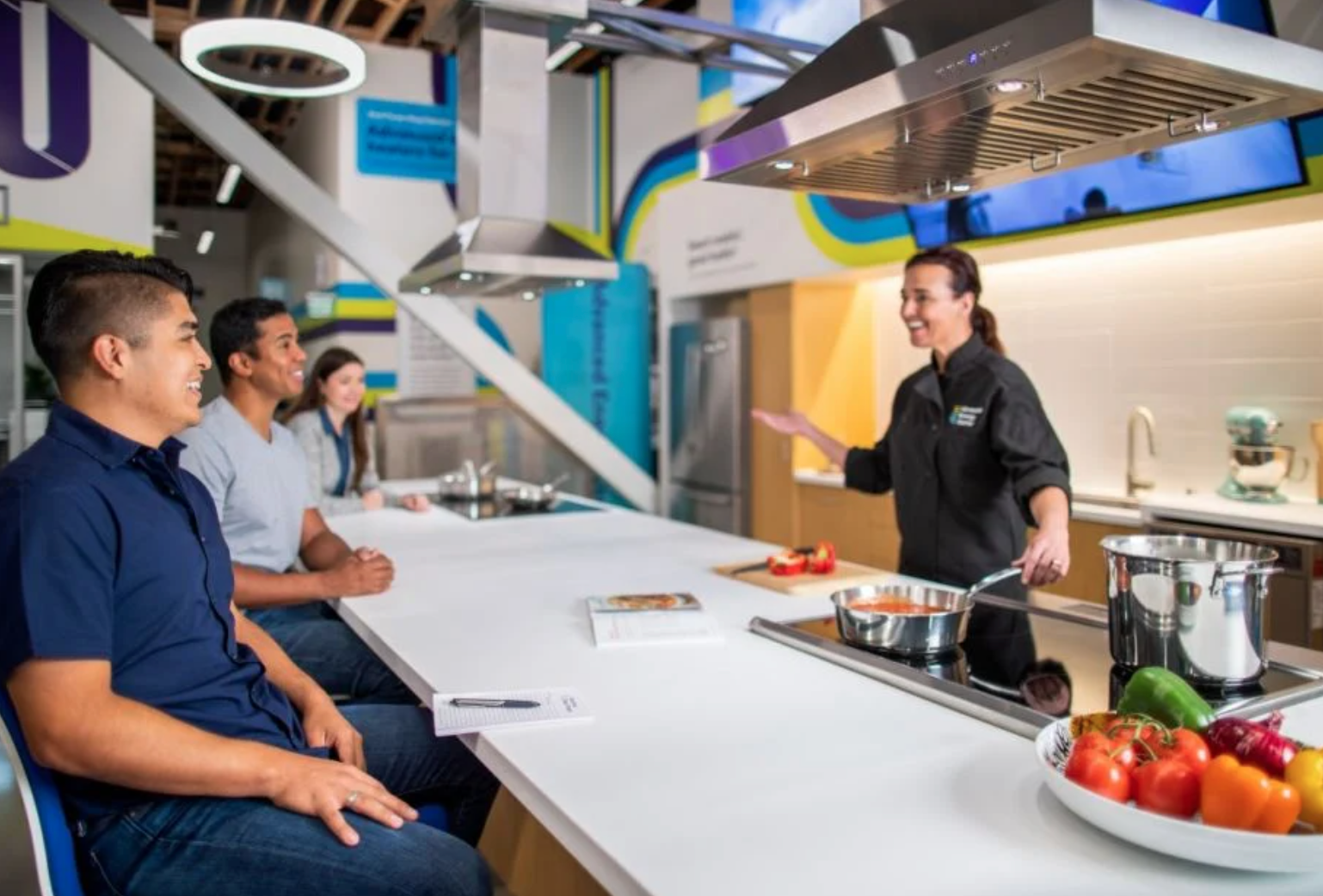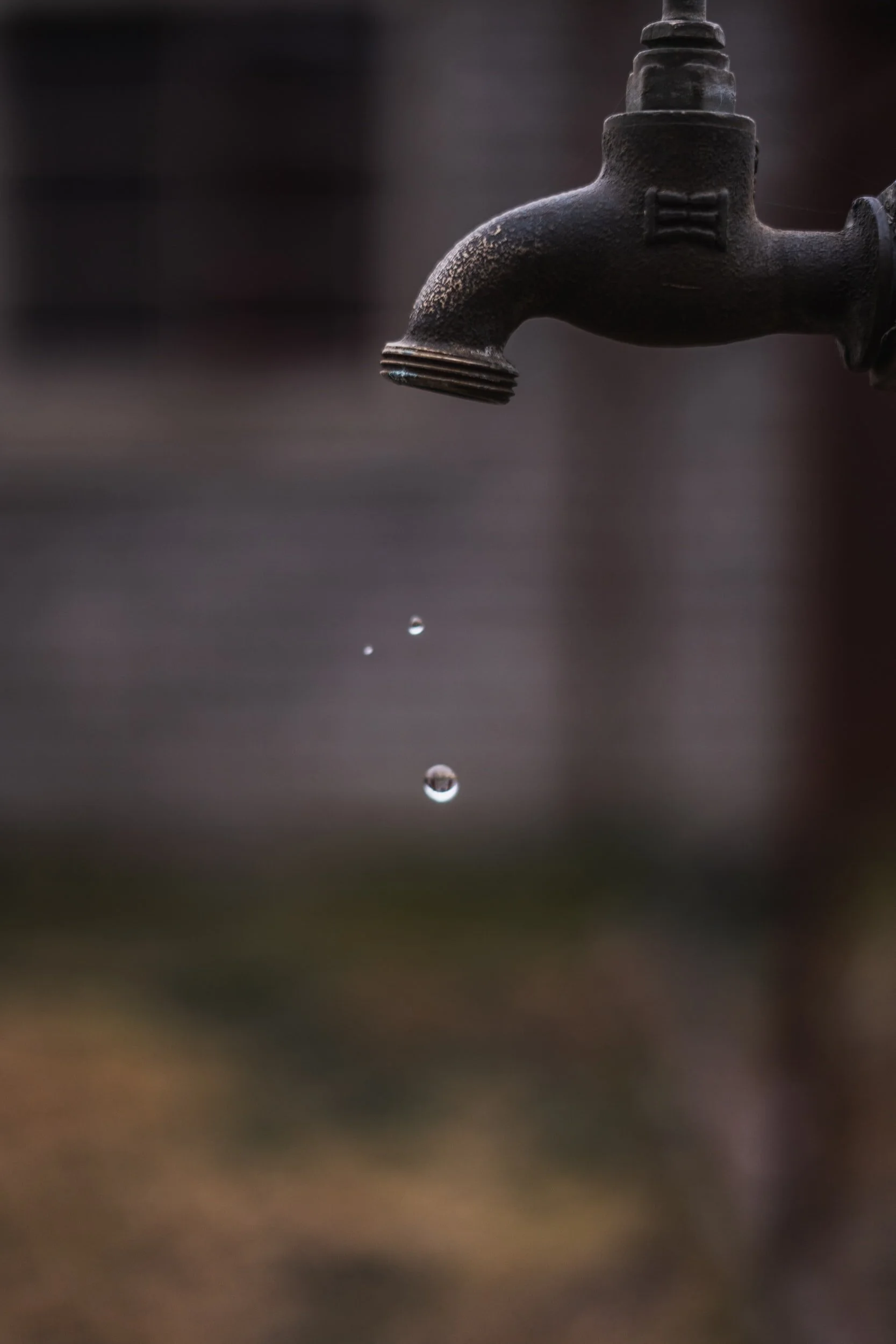At This One-Stop Shop, You Can Outfit Your Entire Home Sustainably
At This One-Stop Shop, You Can Outfit Your Entire Home Sustainably
By Emily Nonko, Next City September 30, 2021
Photos usable. word count: 1094
Special rules: Please include the tracking pixel into the source or HTML view of your CMS when republishing this story. The tracking pixel can be found at the bottom of the story.
This June, a storefront opened along a main drag of downtown Santa Rosa, California, with a unique goal: to educate local residents about the tools that contribute to a more energy-efficient life and offer support to buy and use them.
It’s called the Advanced Energy Center, and it’s a relatively new way to empower a community to take the steps necessary to combat climate change. This exhibition and demonstration center is also a training hub and referral office, where visitors can browse and interact with different energy-efficient technologies — from electric induction cooktops to heat pump water heaters — then find the right contractors to install those technologies and even get financial help to do it.
There have been over 1,200 visitors since its June opening, according to Chad Asay, the director of the Advanced Energy Center, who wants to cement this space as a trusted, go-to spot for residents and building professionals. “While there are many centers that focus on the deployment, or the market, or the education around these technologies, you will not see all that at one location like you will see at the Advanced Energy Center,” he says.
The history of the Advanced Energy Center goes back to the devastating 2017 Northern California wildfires, which took nine lives and destroyed 3,043 homes in Santa Rosa. Sonoma Clean Power, the public power provider for Sonoma and Mendocino counties, wanted to engage its customers — and the broader community — about rebuilding homes with efficient, low-carbon technologies and appliances.
There were several challenges in doing so. “There are a lot of technology types that customers and the building community just aren’t familiar with,” says Asay. “When you go to a normal retail store, these more-efficient product types are not well displayed or promoted by salespeople — they’re bought and installed by people who are already motivated with energy efficiency in mind.”
Beyond that unfamiliarity, they are often more expensive than less efficient appliances. Asay uses the example of a gas water heater, typically costing between $500 to $700. A heat pump water heater, which uses electricity and is 60 percent more efficient, costs around $2,200. “The average consumer won’t spend $2,200 for a more efficient water heater, especially when they need it replaced immediately,” as he puts it.
In 2018, the California Energy Commission awarded Sonoma Clean Power a $9.8 million grant to develop solutions, which would revolve around a brick-and-mortar center to promote these products.
One of the first things Sonoma Clean Power wanted to do was offer real-time proof these technologies make sense as a long-term investment. In the fall of 2019, Sonoma Clean Power began installing energy-efficient appliances and technologies in homes and businesses throughout their service territory as part of the grant’s research component. The company is now testing energy efficiency and long-term cost savings in over 60 buildings, according to Asay. The findings will be displayed at the Energy Center next year.
As Sonoma Clean Power forged local partnerships, it also envisioned a public-facing center. “The beauty is that it’s on a main street … it’s not on the second floor of a building or a space only a vendor can bring you in,” says Kallie Fishman, an account director with The Engine is Red, a local agency that helped design the center. “It was created to welcome one and all to learn and ask questions.”
Once visitors arrived, the team wanted an engaging atmosphere that didn’t feel intimidating. “We wanted to find that sweet spot of being informative, but not too dense,” says Fishman.
The center showcases numerous technologies, including energy-efficient heating and cooling systems, electric induction cooktops, heat pump water heaters, radiant heating systems, electric vehicle chargers and home battery systems, alongside bright visuals with easy-to-digest information. Displays are interactive — you can test electric induction cooktops inside a functioning kitchen — so “you can touch, feel, hear and experience these technologies while they’re functioning,” Asay says.
Exhibits are coupled with educational events, which so far have been offered digitally. When it is safe to do so the center will conduct in-person gatherings, like hosting local chefs to cook inside the energy-efficient kitchen.
In designing education and programming, “we identified multiple stakeholder groups, which includes home owners, renters, the general public, building practitioners, the real estate community, educators and students, commercial building owners,” lists Carolyn Glanton, a program manager with Sonoma Clean Power. Since April of 2020, Sonoma Clean Power has held 61 classes with over 1,300 people registered on topics including battery systems and induction cooking.
One of the biggest needs is educating local building practitioners, like contractors, developers and architects. So the center offers professional training around these products, how to install them and educate customers. In addition, the center developed a contractor network to easily link customers with the right building professionals.
When it came to the high cost of energy-efficient products, Sonoma Clean Power came up with a few different solutions. For one, the center offers free space to these brands, “as long as they provide us with the best local price,” Asay says. “When you come to the center, you’re going to see manufacturing and distribution discounts.” That $2,200 heat pump water heater costs around $500 at the center, competitive with the gas option.
Sonoma Clean Power also dedicated $2.1 million of its grant to reimbursing contractors and customers, lowering the price of products even further.
Low-income customers who are part of the California Alternate Rates for Energy Program or Family Electric Rate Assistance Program have even more incentives. “For customers who are low-income qualified, most of these technology types are zero dollars for the equipment,” Asay says. “All you have to pay for are associated equipment and installation costs.”
For customers who need further financial assistance, Sonoma Clean Power offers a zero percent loan program, up to $10,000, over 10 years. “Most of these technology types will result in energy savings, and potentially more energy savings than the cost of the loan,” Asay notes.
The California Energy Commission, which awarded the grant, is looking to the Advanced Energy Center as an effective model that could be replicated elsewhere in the state. The key to its effectiveness is that it’s much more than a storefront promoting energy-efficient appliances.
“While it’s great to have a space where people can see, feel and touch the technology types,” Asay says, “by having events and education alongside this cooperative marketplace you can really get people to come to this one location that they can trust.”
Tracking pixel:
<img src="https://www.google-analytics.com/collect?v=1&t=pageview&tid=UA-2562581-1&cid=72417c02-aede-4789-93be-b3c4defb10e1&dh=nextcity.org&dt=%5BSJN%5DAt%20This%20One-Stop%20Shop,%20You%20Can%20Outfit%20Your%20Entire%20Home%20Sustainably&dp=sjn/https://nextcity.org/daily/entry/at-this-one-stop-shop-you-can-outfit-your-entire-home-sustainably"/>






